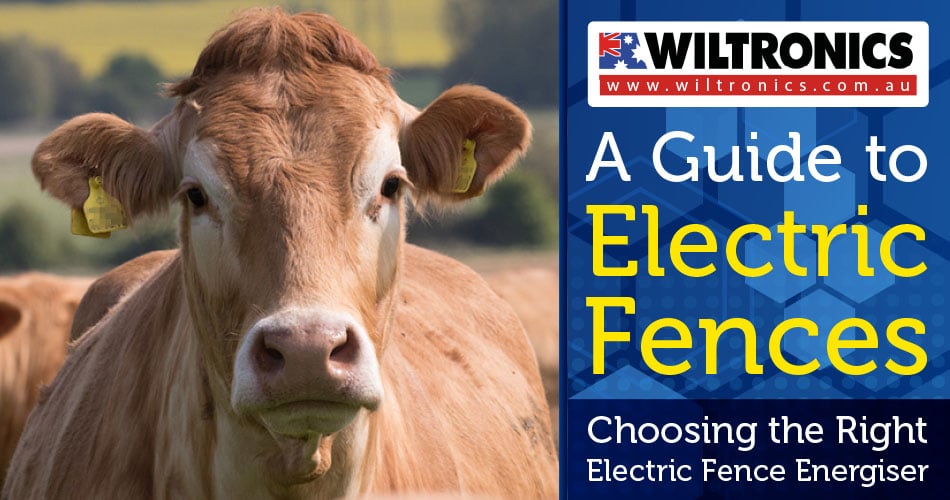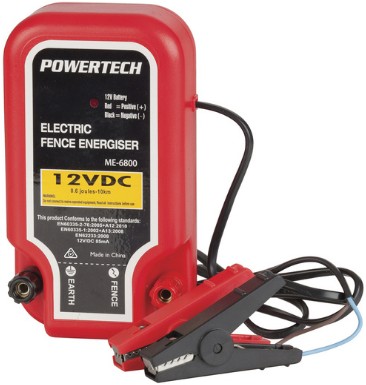A Guide to Electric Fences: Choosing the Right Electric Fence Energiser
October 27, 2022

Do you need electric fence energisers for your fencing?
Containing animals in a selected area of pasture used to be a challenge. Standard fencing was helpful at one point, but it needed a bit of modification to be more effective.
This is where electric fence energisers come into play. The trick is simple but efficient: if an animal touches the wire carrying the pulse, it gives them a shock.
Electric fencing has made farm life a lot easier. And today, energisers have become valuable for property management.
This leaves you with a variety of types available on the market. If you are considering investing in one soon, this guide will come in handy.
A Brief History
The electric fence has been around since 1890. In 1905, the Russians made improvisations during the Russo-Japanese War.
It was not until the early 1930s that the U.S. and New Zealand completely developed electric fencing technology.
The early idea of the electric fence was as a defensive weapon. But the primary application of the technology became keeping livestock under control.
It kept cattle, sheep, or horses from leaving the perimeter. At the same time, it prevented unwanted wild animals from entering crop fields and gardens.
Over the decades, electric fences have evolved. Today, they are common for more than just pasture management. You will see them serving as perimeter security in domestic and private settings.
As a perimeter security measure, the modern electric fence must provide a non-lethal shock.
The Concept of Modern Electric Fencing
An electric fence is a barrier designed to allow an electric current to pass along it. The system consists of a device called a power energiser.
These electric fence energisers have a length of a bare wire, a rod used to lead the electricity into the ground. The energisers may draw their power from a standard 230VAC outlet using a 230VAC to low voltage DC output (typically 12VDC). Alternatively a solar charged 12VDC battery is commonly used.
Every second or so, a pulse of high electrical energy is sent down the wire from the energiser to the grounding rod. Delivering a high voltage shock to whoever touches it, it serves as a potent stock management and animal pest measure.
Electric Fence Energisers in the Works
Generally, electric fence energisers emit the current pulse. The pulse is released every second, lasting approximately 150 microseconds long.
The energiser fence terminal (positive) is connected to the insulated fence wires. In contrast, the energiser ground terminal (negative) is linked to the metal rods in the ground. Hence creating a circuit.
It will not be completed if the outsider is not touching the ground. The power then goes from the animal or person into the ground, returning to the energiser via the earth’s rods.
If an animal or person were to touch the fence, they would receive a shock. Now, suppose a bird is sitting on the wire.
Since it is not making contact with the ground, it will not receive a shock. The same goes for a person wearing insulated footwear. The current cannot pass through the insulated soles.
Moreover, the amount of electrical energy generated by an electric fence varies. The voltage may also be increased to discourage animals from crossing boundaries.
Would-be intruders also receive a discouraging jolt if they make direct contact. The effect of most electric fence encounters is a sharp shock. Imagine a stinging sensation of a snapped rubber band.
An electric fence should only be supplied with enough power to be effective, not harmful or lethal. As for the use, it may be strongly regulated by city ordinances or state laws.
The Main Components
What makes up an electric fence? A system consists of the following essential elements:
1. Electric fence energisers
An energiser acts as the powerhouse of your electric fence. Its job is to do a few electricity conversions to get high-voltage pulses.
Once that pulse of electric current is generated, it will travel along the entire length of the fence. Each pulse only lasts a fraction of a second and produces roughly a second interval.
The type of energiser you need depends on how close the fence is to the main supply. Other considerations include how long the fencing will be and the animals you want to control.
2. Conductor or the wire
You can use various types of conductors or wires for your electric fence. Steel wire, for one, is strong, durable and highly effective at conducting electricity.
It is a suitable option if you want a greater but non-lethal shock effect when touching the fence. But it is heavier than other alternatives and ideal for permanent fencing solutions.
Alternatively, you can opt for polywire. This wire is UV-stabilised and great for temporary fencing and strip grazing.
Other selections you have are polytape and polybraid. Both are highly visible and best for permanent and temporary fencing. They are more vulnerable in high winds, though.
3. Reels
A reel allows you to unroll the fence wire evenly without potentially damaging kinks. Then, you can roll it up again for reuse.
By locking firmly onto a reel post, the reel also keeps the fence wire taut.
4. Stakes and posts
Permanent fences use timber posts to hold the fence wire. Metal or plastic stakes are suitable for temporary ones.
Posts and stakes come in different heights and spacings, depending on the stock you want to fence.
Electric fences running parallel to a public road are subject to signage regulations and installation requirements. Check with local authorities.
5. Insulators
Insulators stop the fence wire from touching the post or stake. In return, the electricity does not leak back to the ground.
Anchor or end-strain insulators also take the strain of the wire at the end of the fence line or corners. Polystakes, made of non-conductive plastic, do not need separate insulators.
Look for good quality insulators that are smooth and easy to dry. These qualities help prevent moisture from collecting. Any leak in the arc will reduce the effectiveness of the fence.
6. Earth stakes
To work effectively, all electric fences have to be correctly earthed. Earth stakes are inserted into the ground and attached to the energiser.
How they work is simple. They ensure the power returns through the ground and back to the energiser. All this after a person or an animal completes the circuit by touching the fence.
7. Fence tester
Your electric fence needs regular maintenance. A device to measure the power on the fence lines will be a big help.
A fence tester, or voltmeter, is a good way to go! It will help you locate any problem areas where power is leaking away.
Types of Electric Fence Energisers
The ideal energiser size for your property is determined by the distance the fence is powered. Considerations also include the number of wires in the fence and the type of animal to be fenced (if there are any).
There are two types of energisers, and these are:
- 230VAC powered. This type of energiser unit is plugged into a 230V power supply. A plug-in AC to DC adapter energiser is a great example.
- Solar charged battery. For this type, a battery and solar panel run the energiser and can be left out in your pasture or home property.
Things to consider when buying an energiser
The amount of wet/green weed contact with the energised wires. A 400 metre permanent fence that is covered with weeds and is only 6 in. above wet soil may leak or drain more energy than a 3-joule energiser can provide.
How high off the ground will the lowest live wires be? Low wires, e.g. 7-15 cm off the ground, cause much more leakage from weed contact than higher wires (> 45 cm).
The species to be contained or deterred. Animals vary in their internal resistance (in ohms) to electricity.
Heavy animals tend to be the most affected; for one, their weight compresses the topsoil. This reduces the electrical resistance.
The total length of your fence. As long as there are no energy leaks to the soil via weed or poor-quality insulators, your fence is good to go. Even small units will energise long fences.
Power source. If the fence is close to a 230V power outlet, go for plug-in (AC/DC) energisers. Solar powered battery energisers, in contrast, are a good option if it is far away from the outlet.
Get Your Electric Fence Energiser Here!

Electric Fence Energiser 10KM
Product code: JME6800
This Electric Fence Energiser is capable of electrifying up to 10km of fencing. It is easy to attach; first, connect the alligator clips to a 12VDC lead-acid battery.
Then wire up to a suitably fitted electric fence wire and ground stake using the binding posts. You can find instructions included with the device.
Note: Do not connect to mains electricity.
The Bottom Line
Electric fences offer an effective solution to securing properties or containing livestock. All thanks to electric fence energisers that do the groundwork.
We hope this post will help you choose the energiser that best meets your fencing needs.
This article was originally published in March 2021 and has been updated.
© Electrotech Brands Pty Ltd 2022


Write a Comment
You must be logged in to post a comment.